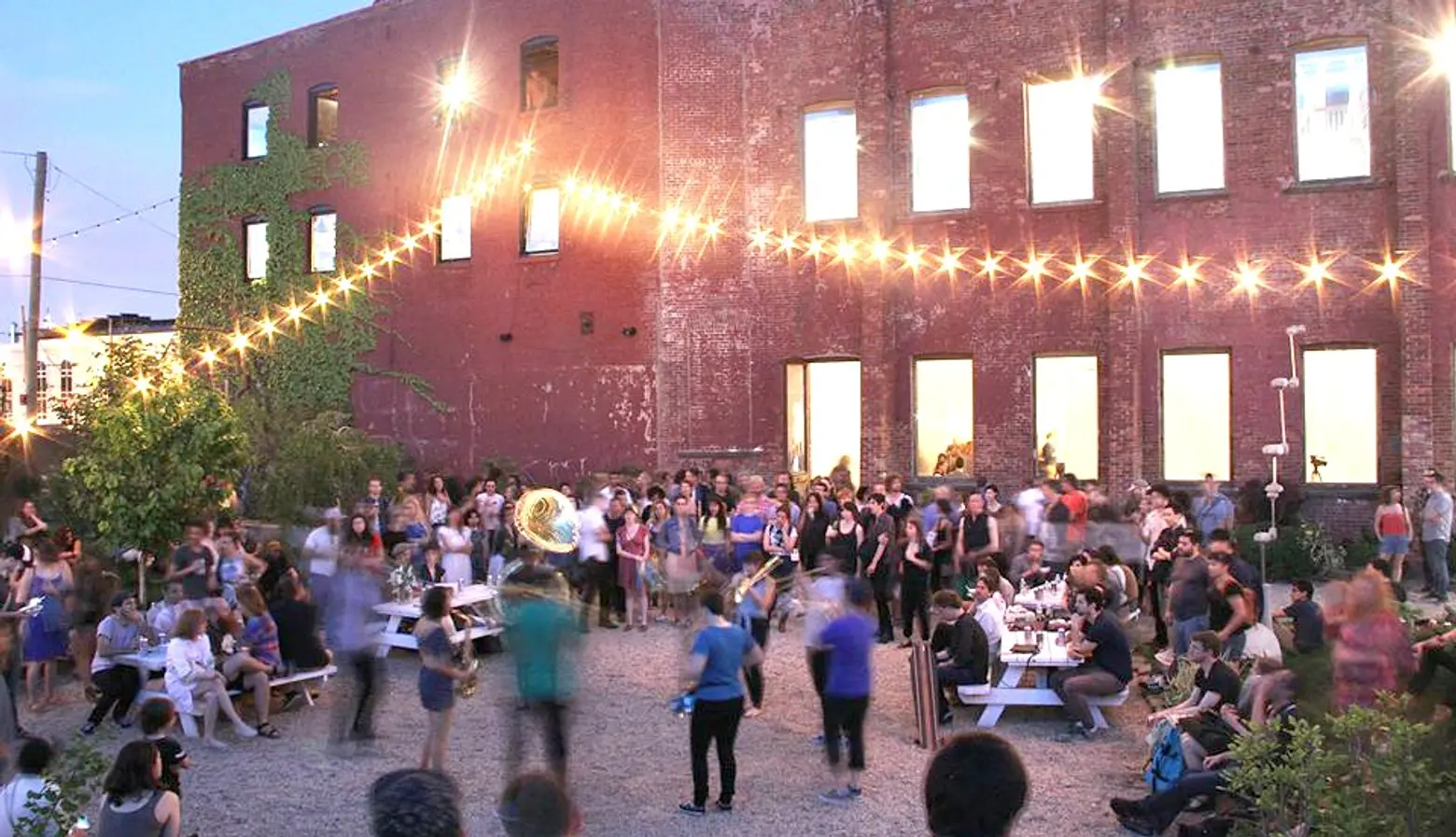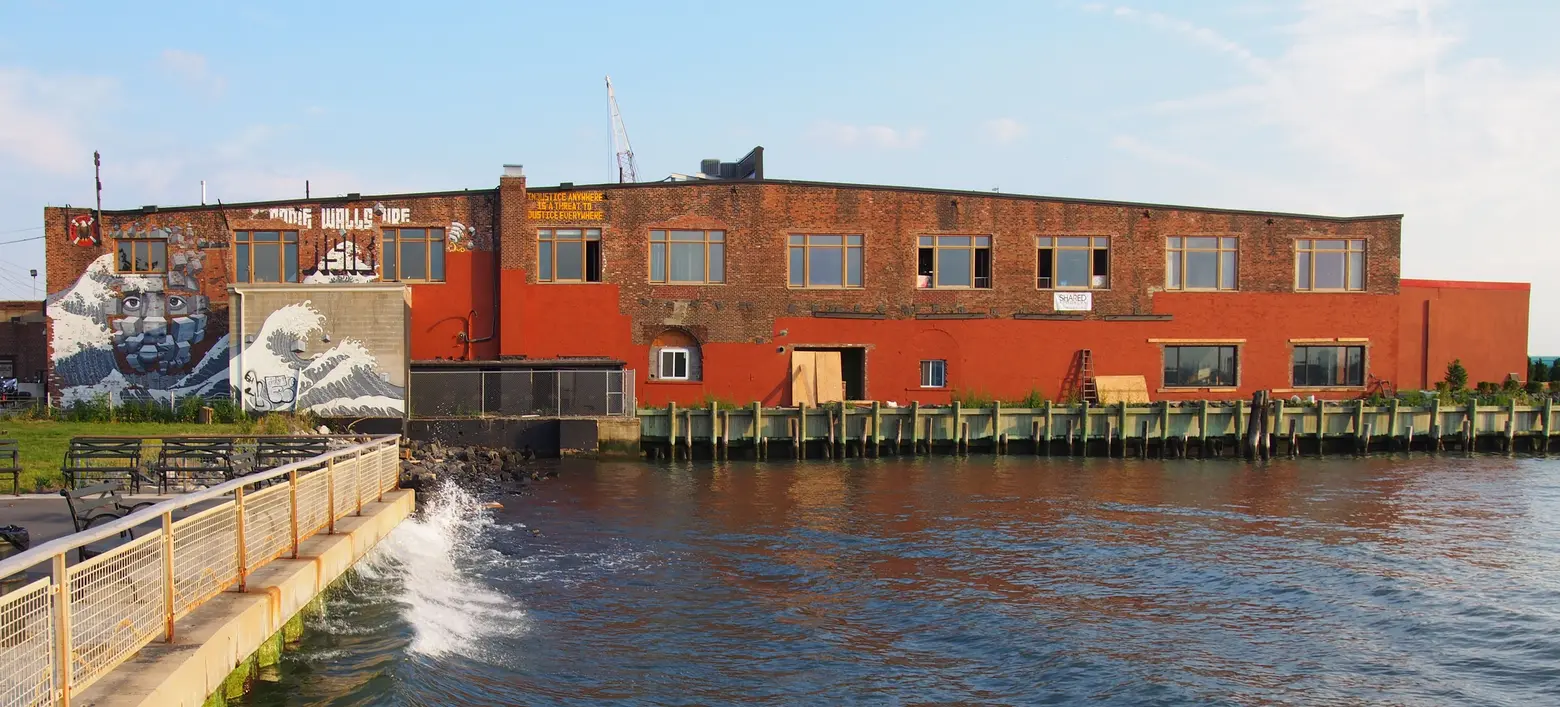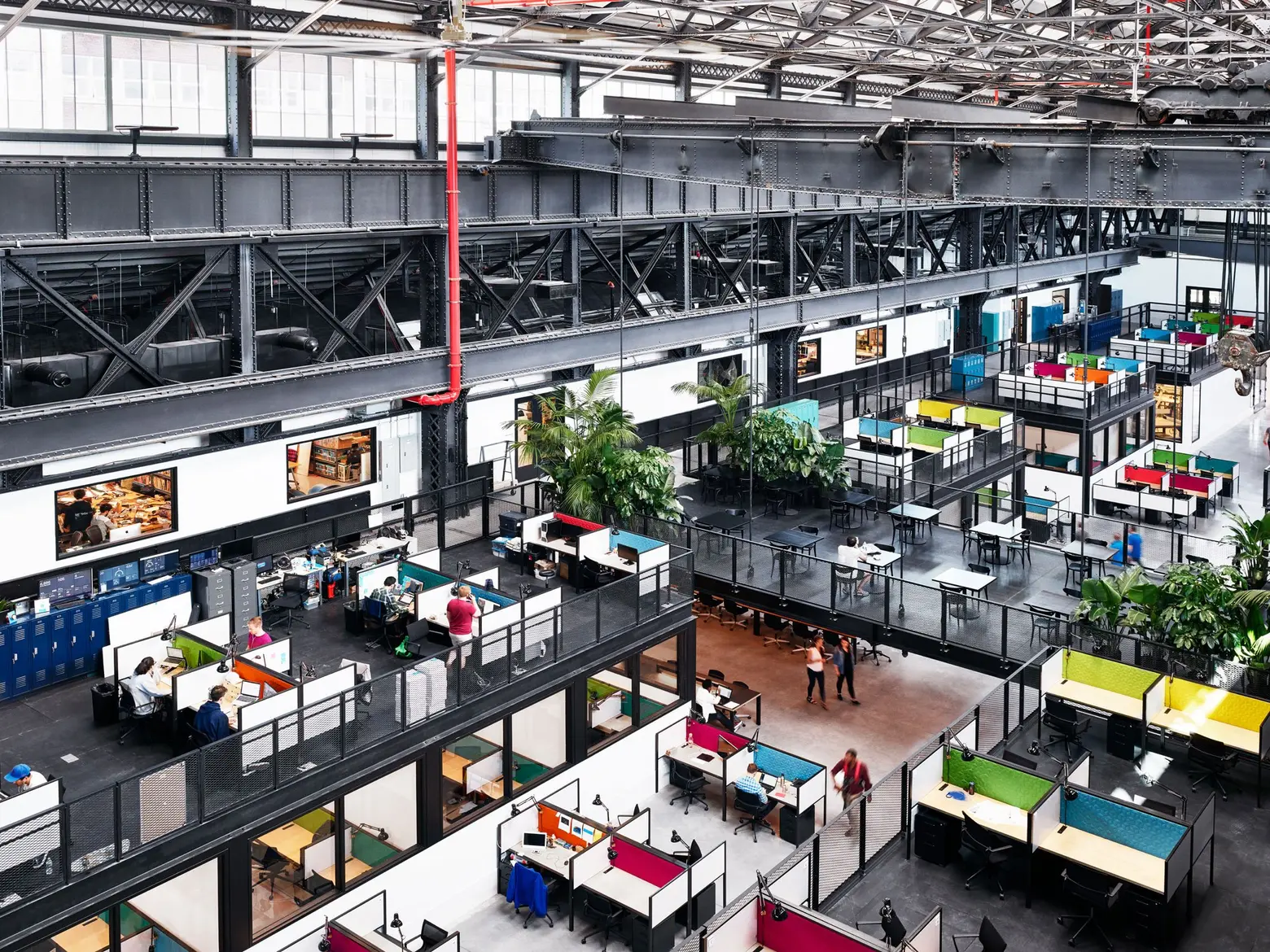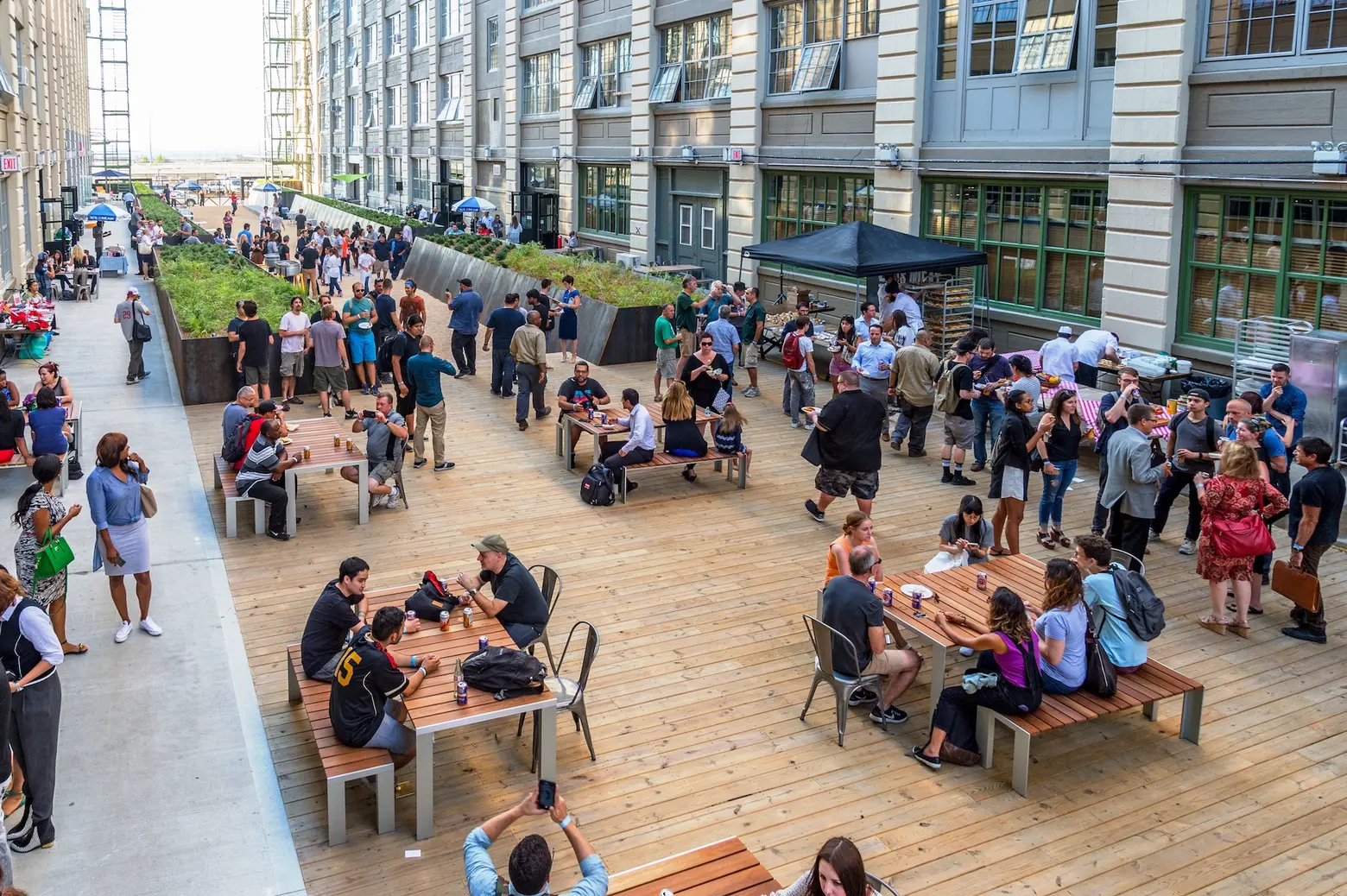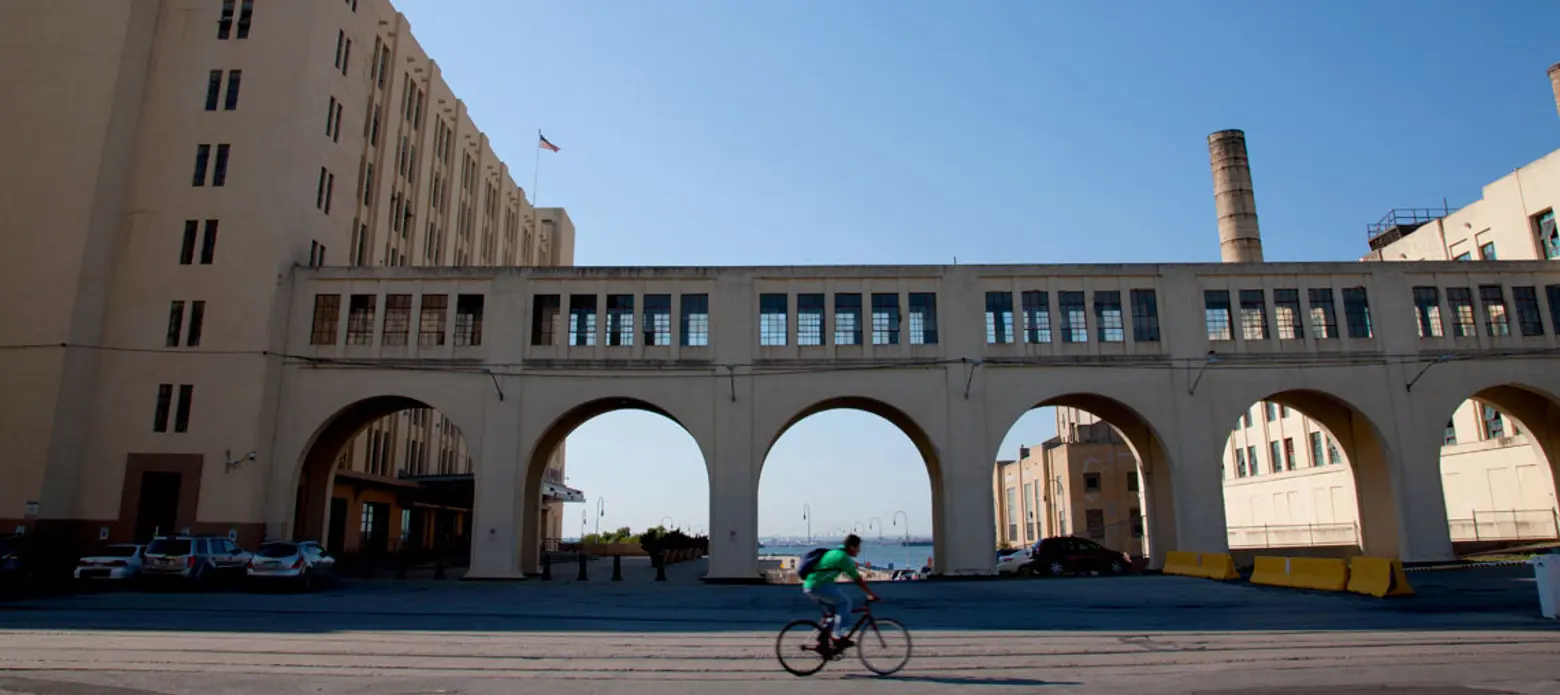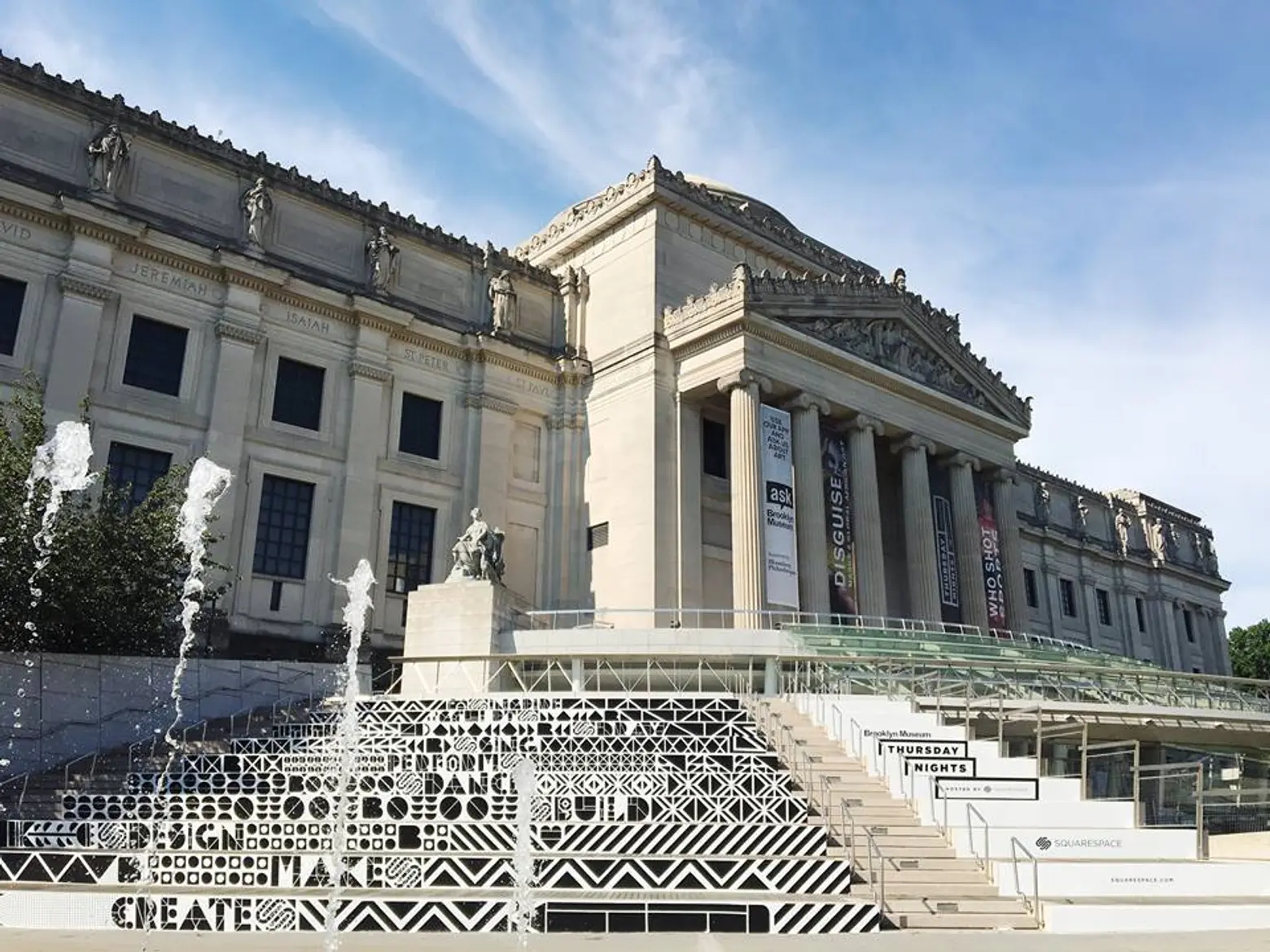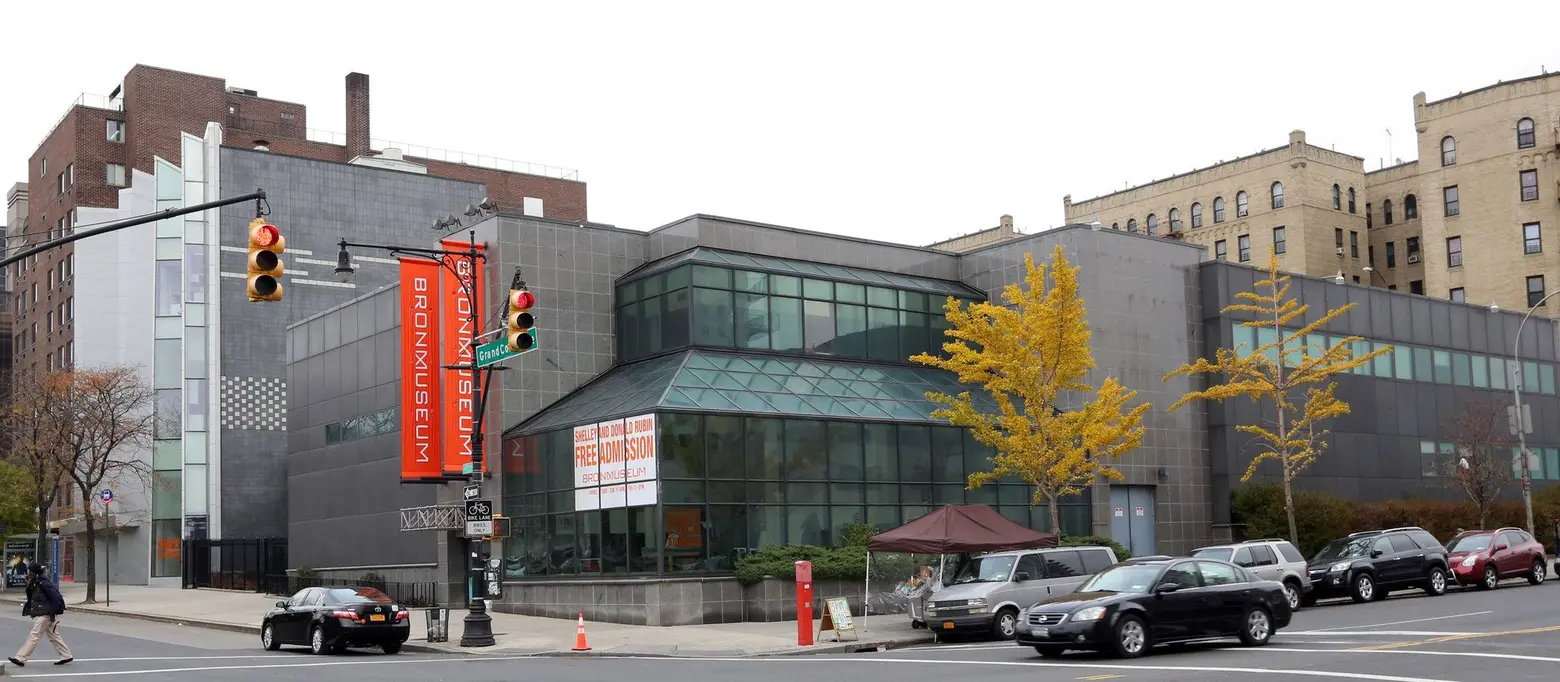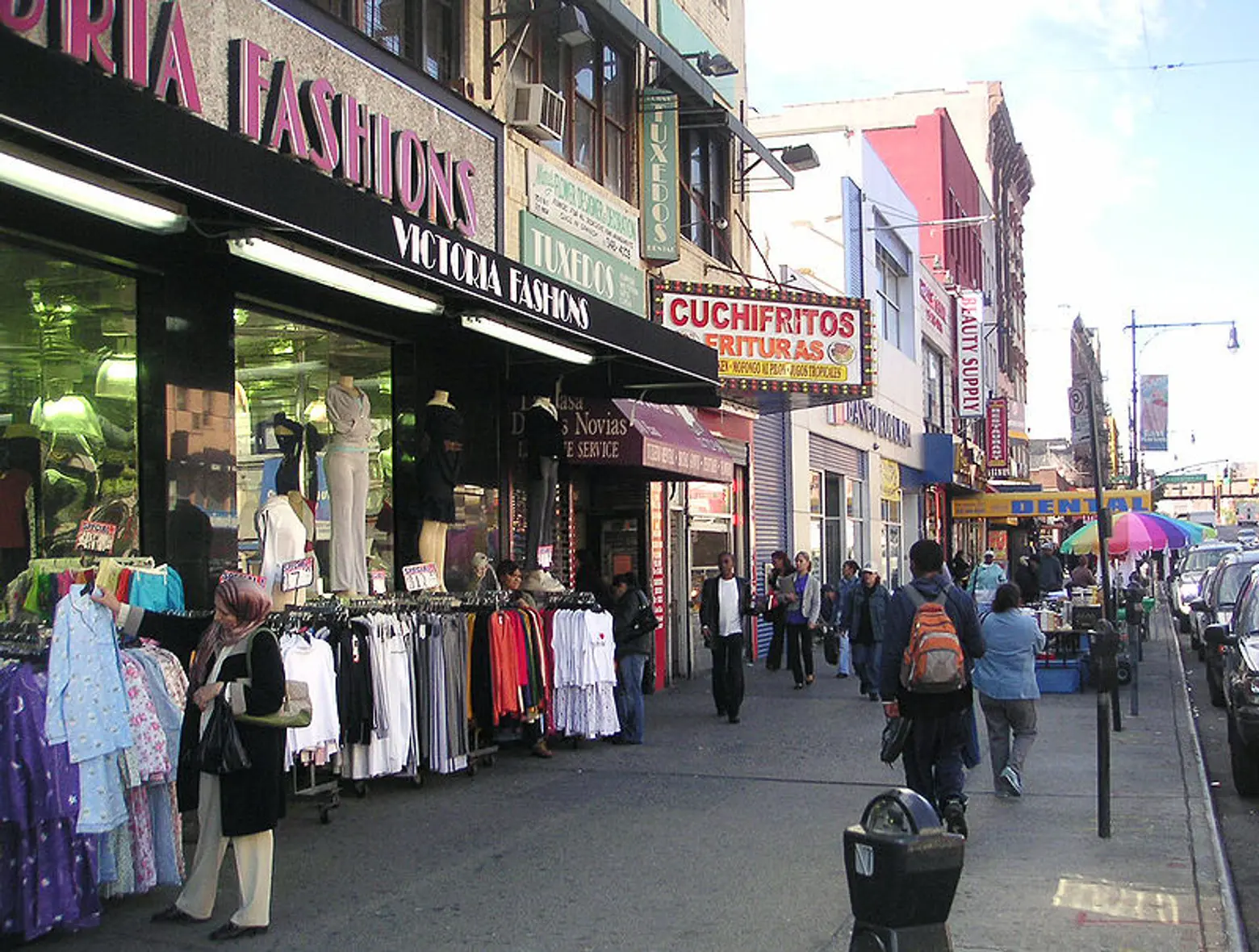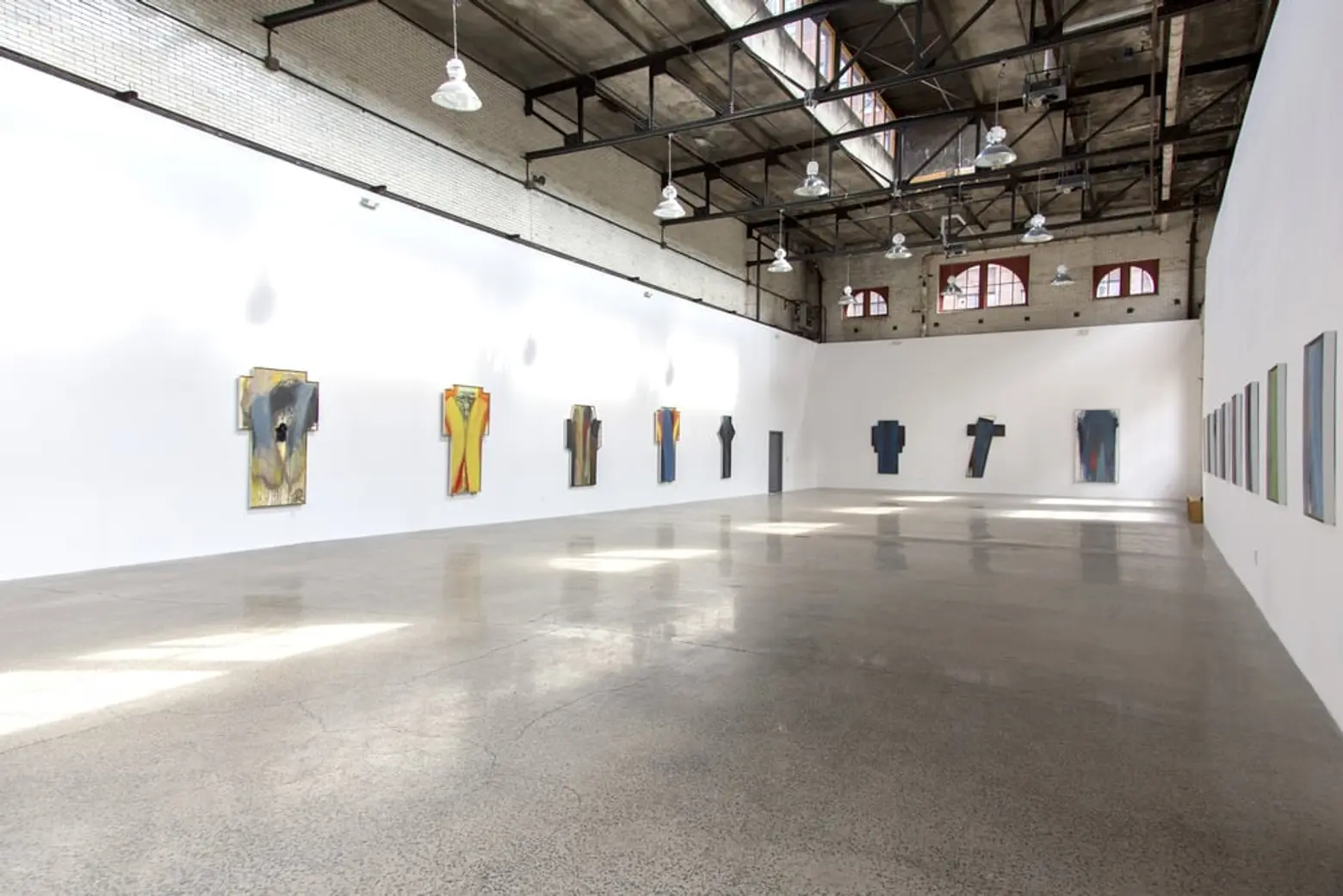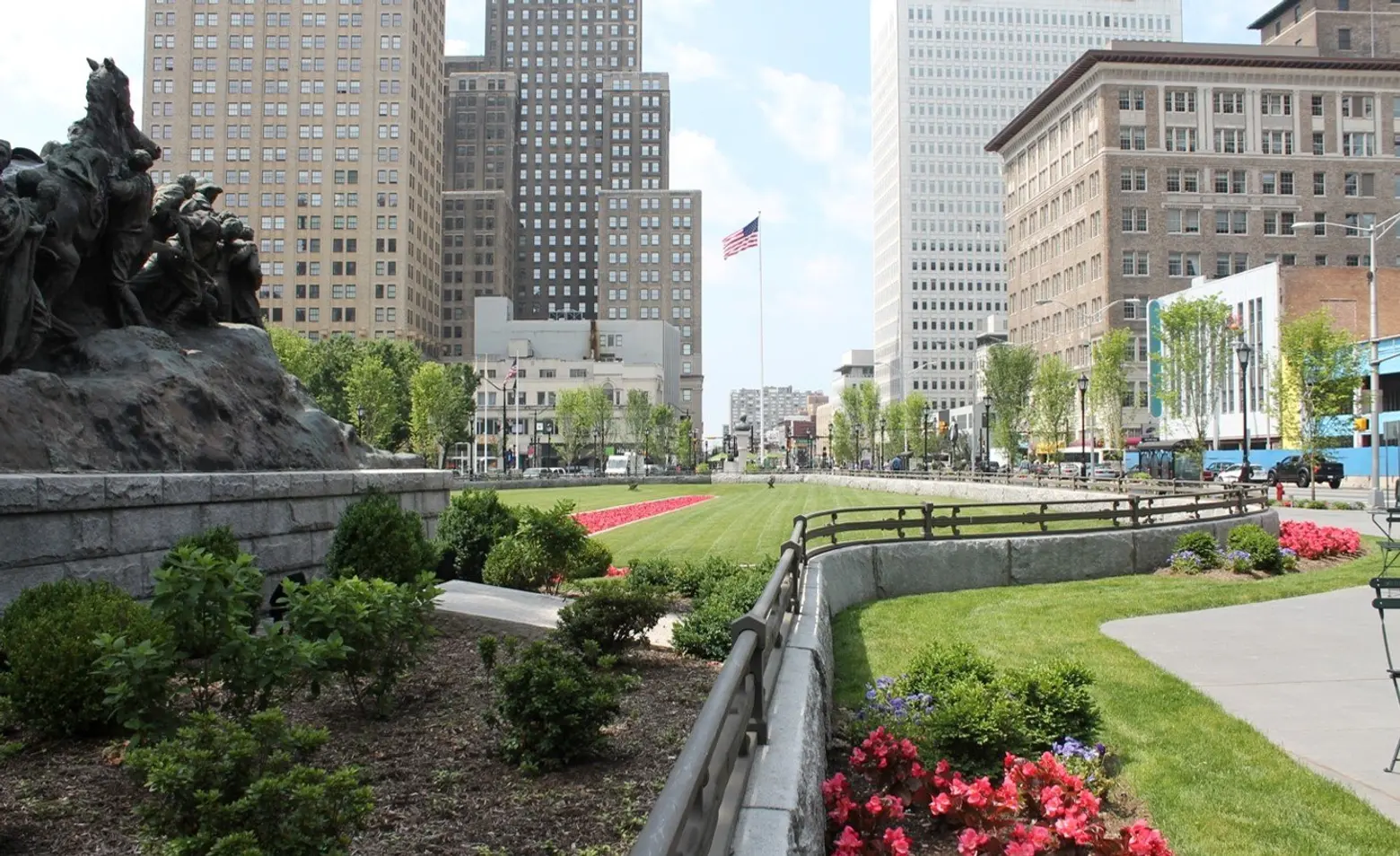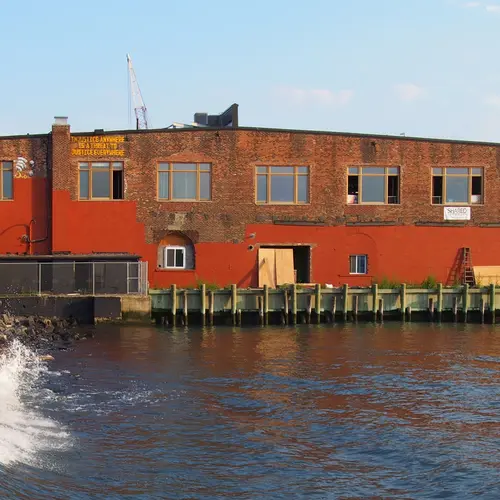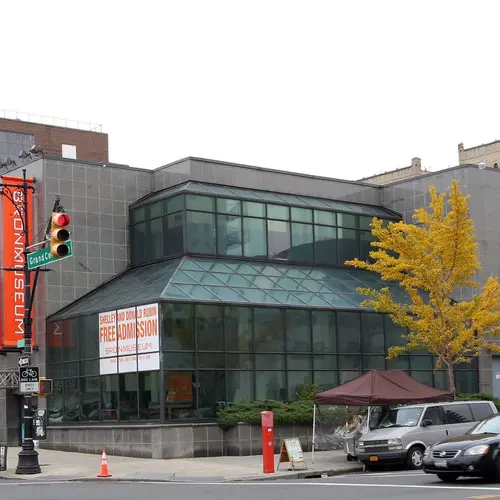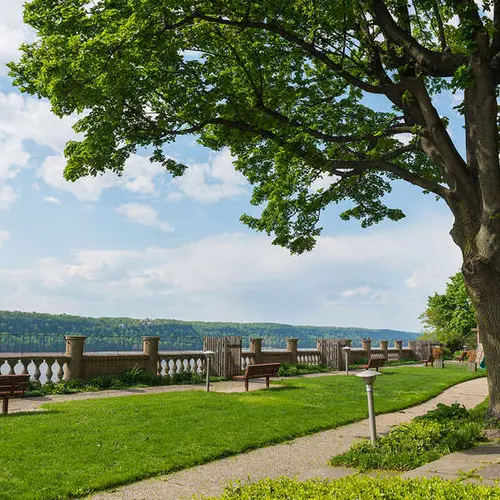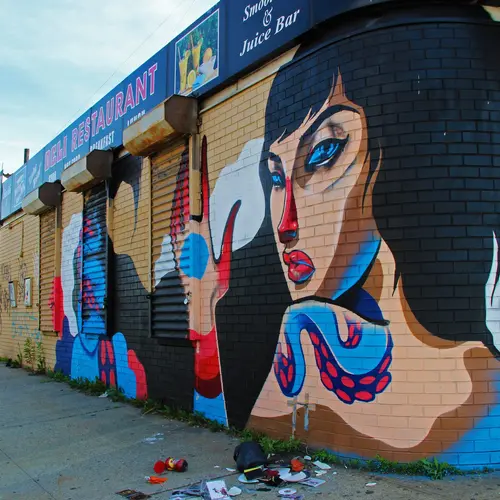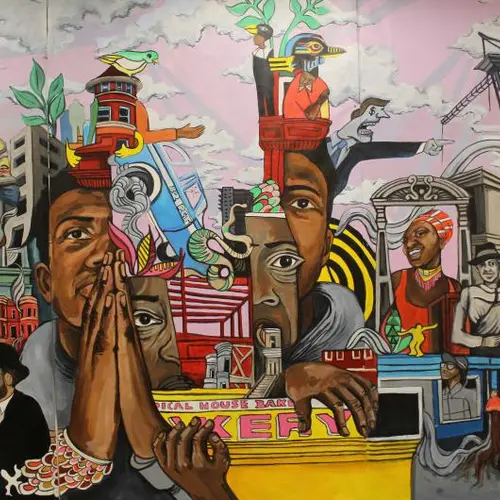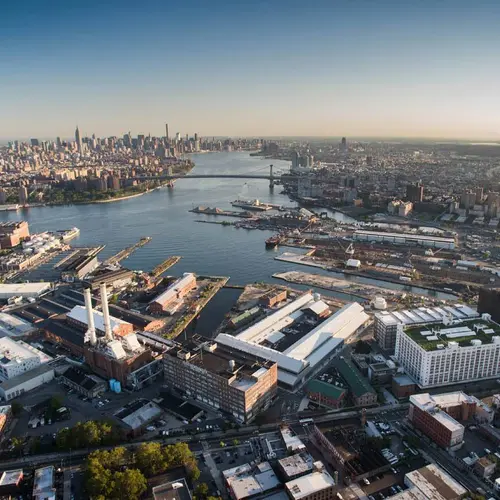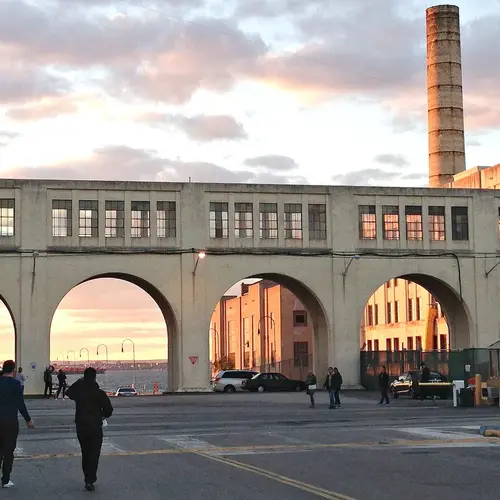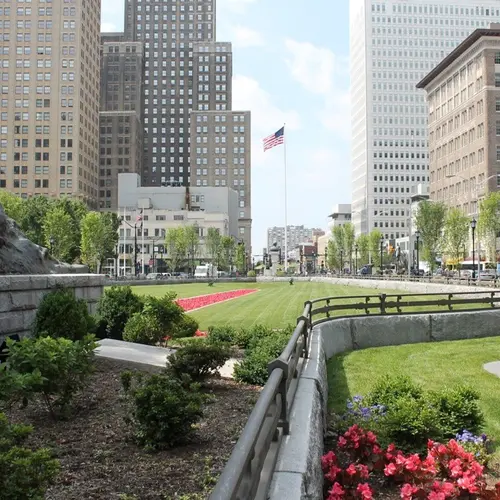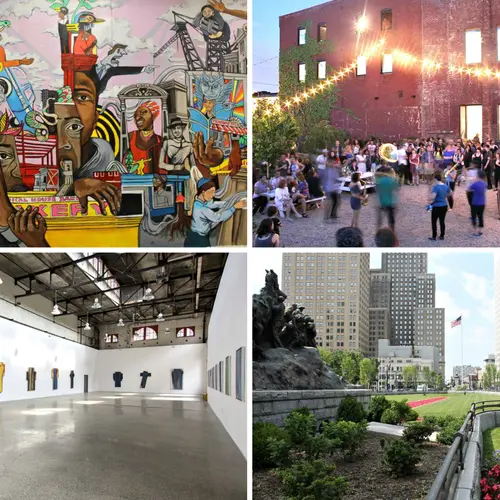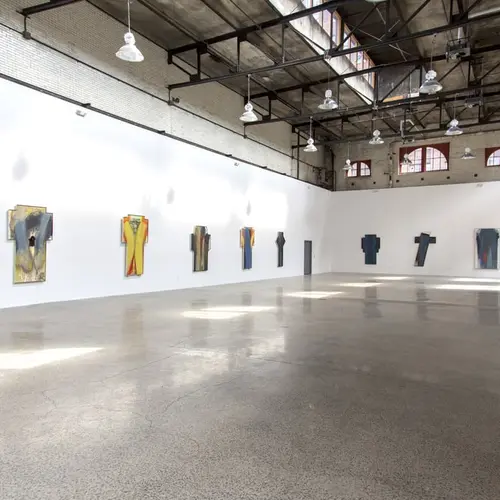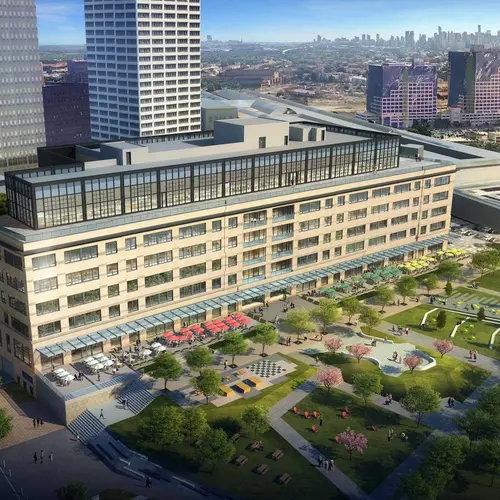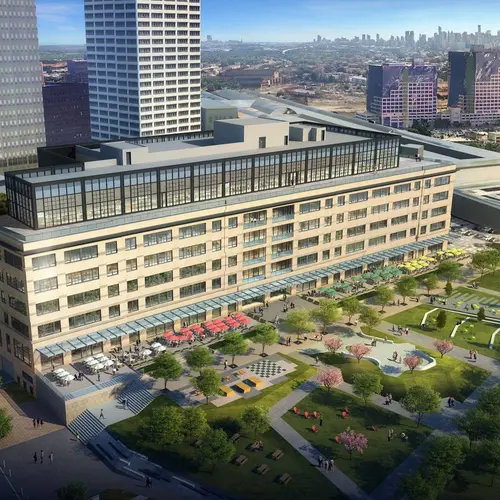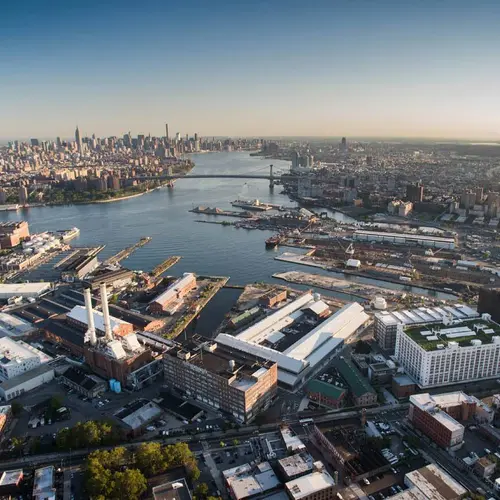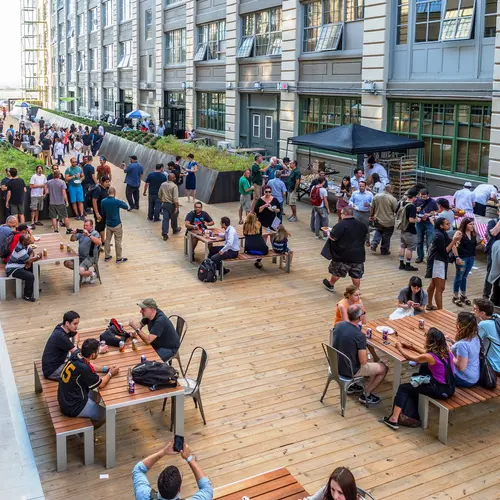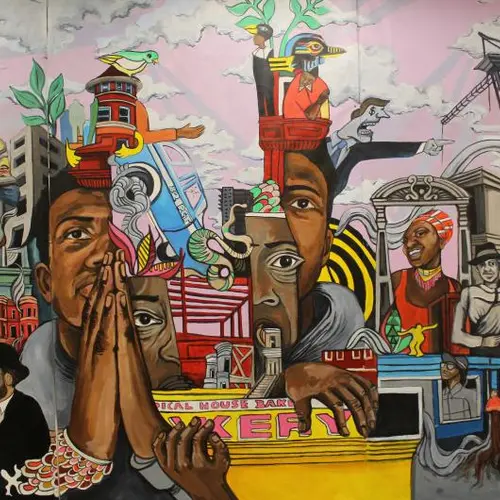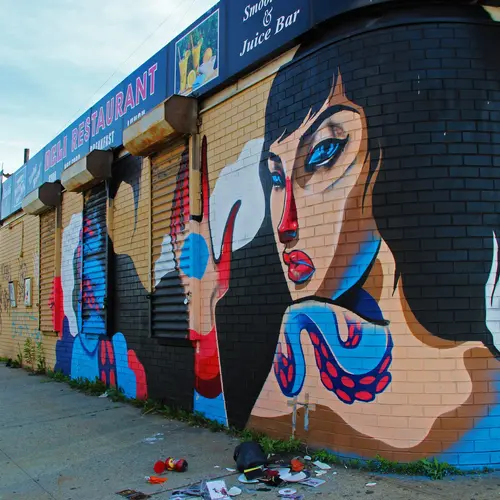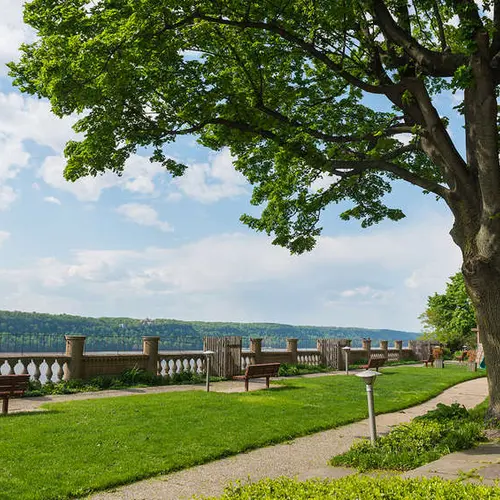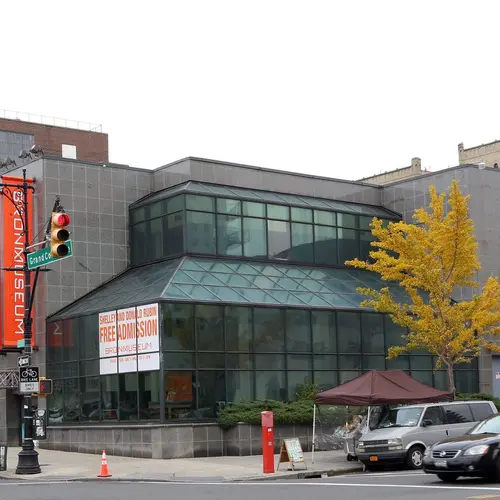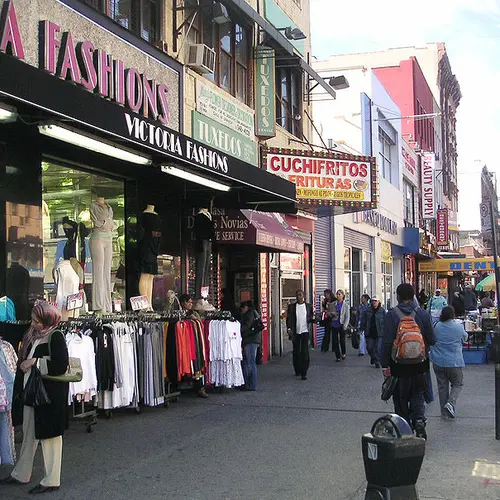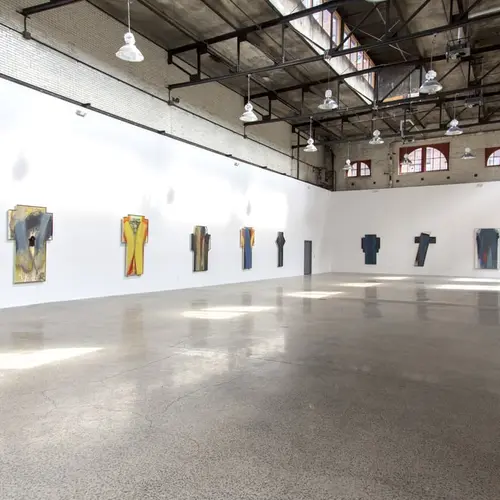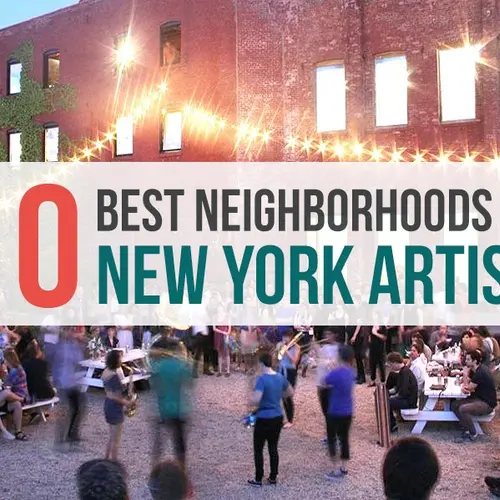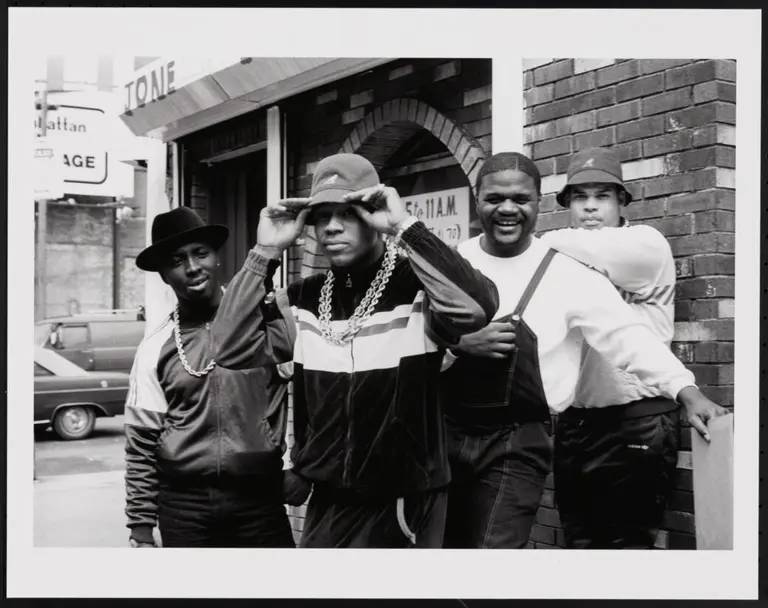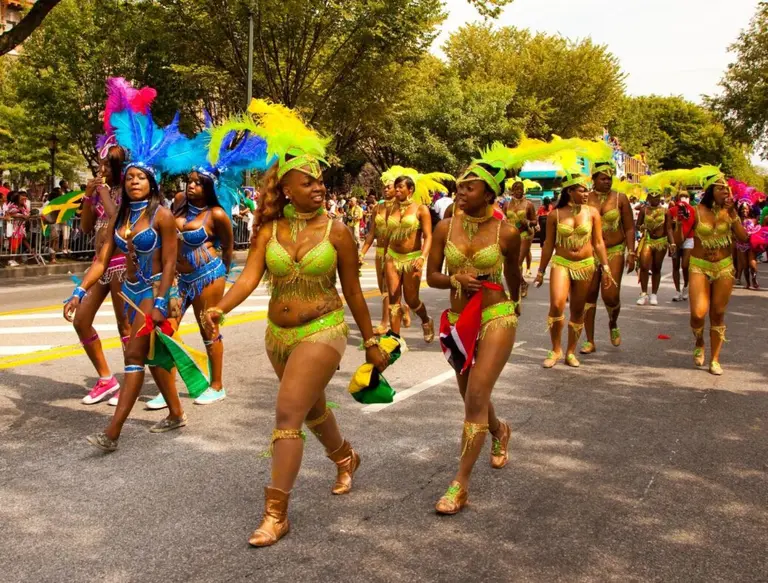The 10 best neighborhoods for New York City artists

Like most things in New York, creative communities come and ago as new development and rising rents force artists to move on to the next best, or cheaper neighborhood. While 6sqft found ‘hoods like the Upper East Side, Harlem and Long Island City to be the best places for artists a few years back, we’ve updated our top-10 list to reflect the changing times. Ahead you’ll find some areas you may expect–Sunset Park and Bushwick, for example, along with more up-and-coming artsy enclaves like Newark, Washington Heights, and the South Bronx.
1. Red Hook
With a scenery full of warehouses and shipyards and, of course, the incredible view of the Statue of Liberty, Red Hook continues to attract artists to the community. While the waterfront neighborhood, located between the Buttermilk Channel, the Gowanus Bay, and the Gowanus Canal, lacks a direct subway connection, the quiet island-like ‘nabe is perfect for cultivating creativity. Pioneer Works, a center for “research and experimentation in contemporary culture,” was founded in 2012 by artist Dustin Yellin, a high-school dropout who came to New York with dreams of becoming an artist, but with no knowledge of the city’s long relationship with it. The 25,000-square-foot center houses artist studios, exhibition and performance space, a science lab and a recording studio, all as part of a supportive community of emerging artists.
If appreciating art is more your style, the Kentler International Drawing Space has called Red Hook home since 1990 and offers exhibits that represent emerging and under-recognized national and international artists. Stop by Red Hook Labs, a public benefit corporation which aims to create creative communities that work, create, mentor and learn from one another. To experience even more of Red Hook’s art scene, the Brooklyn Waterfront Artists Coalition (BWAC), a Civil War-era warehouse turned gallery, offers free Performance Series and Saturday afternoon Screening Room programs.
2. Navy Yard
Like Red Hook, the Navy Yard is a waterfront community with old shipyards and refurbished warehouses. What used to be an industrial powerhouse during World War II, with 70,000 workers building ships like the U.S.S. Missouri, has turned into a more spacious, cheaper alternative to Manhattan’s art and tech scene. The must-see space in the Navy Yard is Marco Sea’s New Lab, an interdisciplinary space designed to inspire innovation. In this 84,000-square-foot former shipbuilding site, nearly 300 engineers and entrepreneurs work in advanced hardware and robotics. While there’s an application process to get to work in the incredible space, public events and meetups do exist. For the less science-inclined, head over to BLDG 92 to learn more about the history of the Navy Yard. Plus, the center has a visiting artist program, which provides space for artists seeking to work on site in any medium.
3. Sunset Park
Quickly transforming from a middle-class factory-filled enclave to the city’s new frontier for the garment industry, Sunset Park has drawn attention from various creative and collaborative communities due to its waterfront location and proximity to Manhattan. One of the creative giants in the neighborhood is Industry City, a 16-building, six-million-square-foot industrial complex that welcomes nearly 400 companies in fields ranging from architecture to biotech to artisanal craft. To engage with the community, Industry City launched the Innovation Lab, which offers job placement and training, business assistance, workshops and other educational classes to the public. To revitalize the fashion industry, the city has hired WXY architecture + urban design to design a “Made in NYC Campus,” which will provide spaces for film and fashion companies for affordable prices, opening in 2020.
Unique to Sunset Park, the Brooklyn Army Terminal, a former military supply base that was redeveloped for commercial use, includes over 70 diverse businesses, employing 930,000 workers in the area. The flexible leasing opportunities and close proximity to Manhattan have attracted tenants like Tough Mudder, Urban Green, and Marc Joseph.
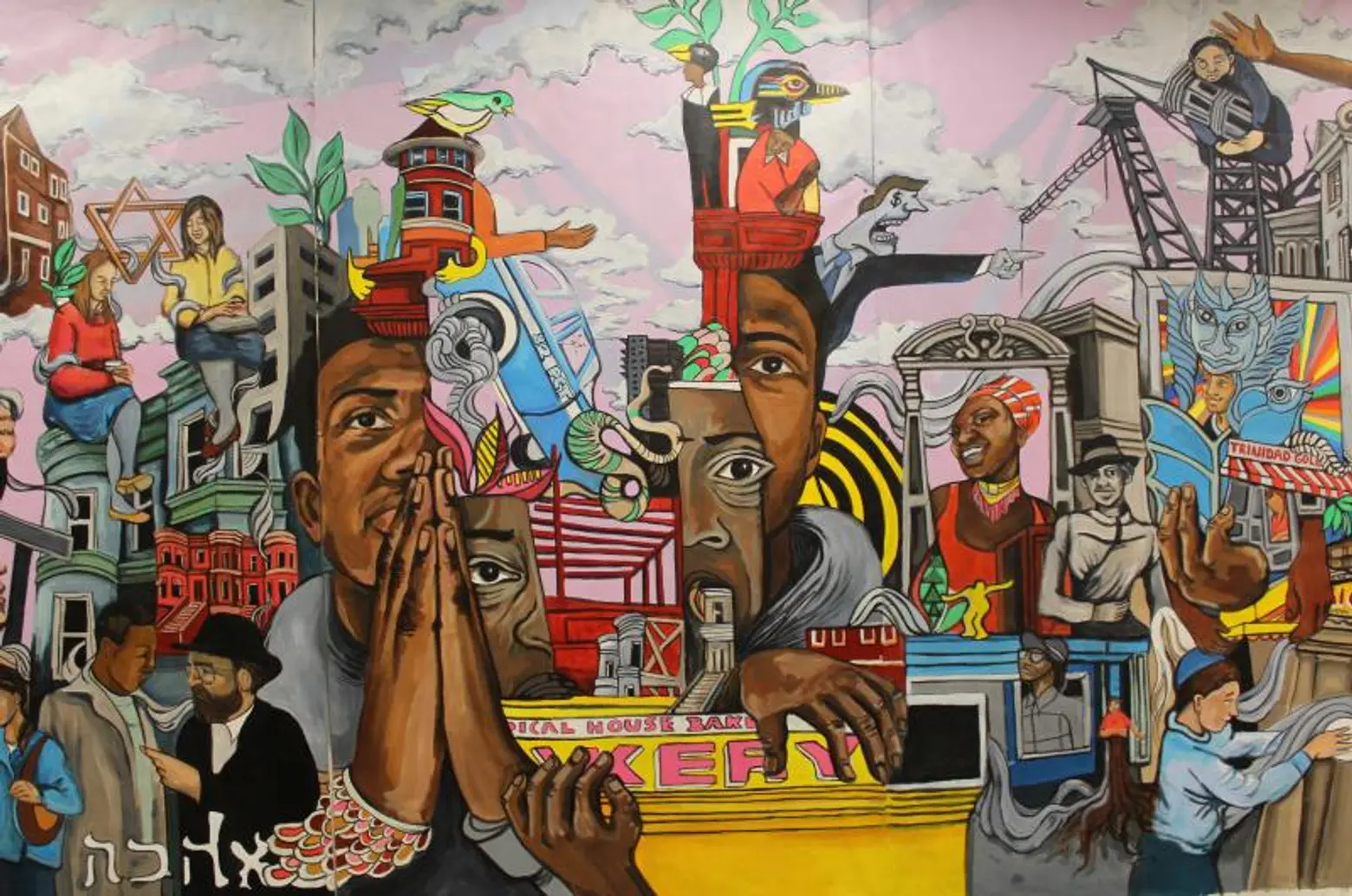 “One Crown Heights” mural by the Teen Empowerment Mural Apprenticeship
“One Crown Heights” mural by the Teen Empowerment Mural Apprenticeship
Located in the heart of Brooklyn, the historic district of Crown Heights boasts the classic rowhouse-lined streets, with few condominiums or co-ops yet to take root. While undergoing rapid change, with shifting demographics and rising rents, the artistic community of Crown Heights remains strong. On Rogers Avenue, get your indie film fix at Video Revival, where the volunteer-operated theater, hidden inside a former beauty salon, screens movies ranging from classic cinema to contemporary video art. Connect with the community through art at FiveMyles, an exhibition and performance space, or become a member of Shoestring Press, a fine art print shop and arts space. The neighborhood also hosts three independent co-working and creation spaces, including 727 Create, Franklin Electric, and NWR Studios.
If interested in learning about art movements, especially those in Crown Heights, check out the Brooklyn Museum, one of the oldest and largest art museums in the U.S. Bringing kids along? The Brooklyn Children’s Museum is a must, with plenty of hands-on activities to keep the whole family busy.
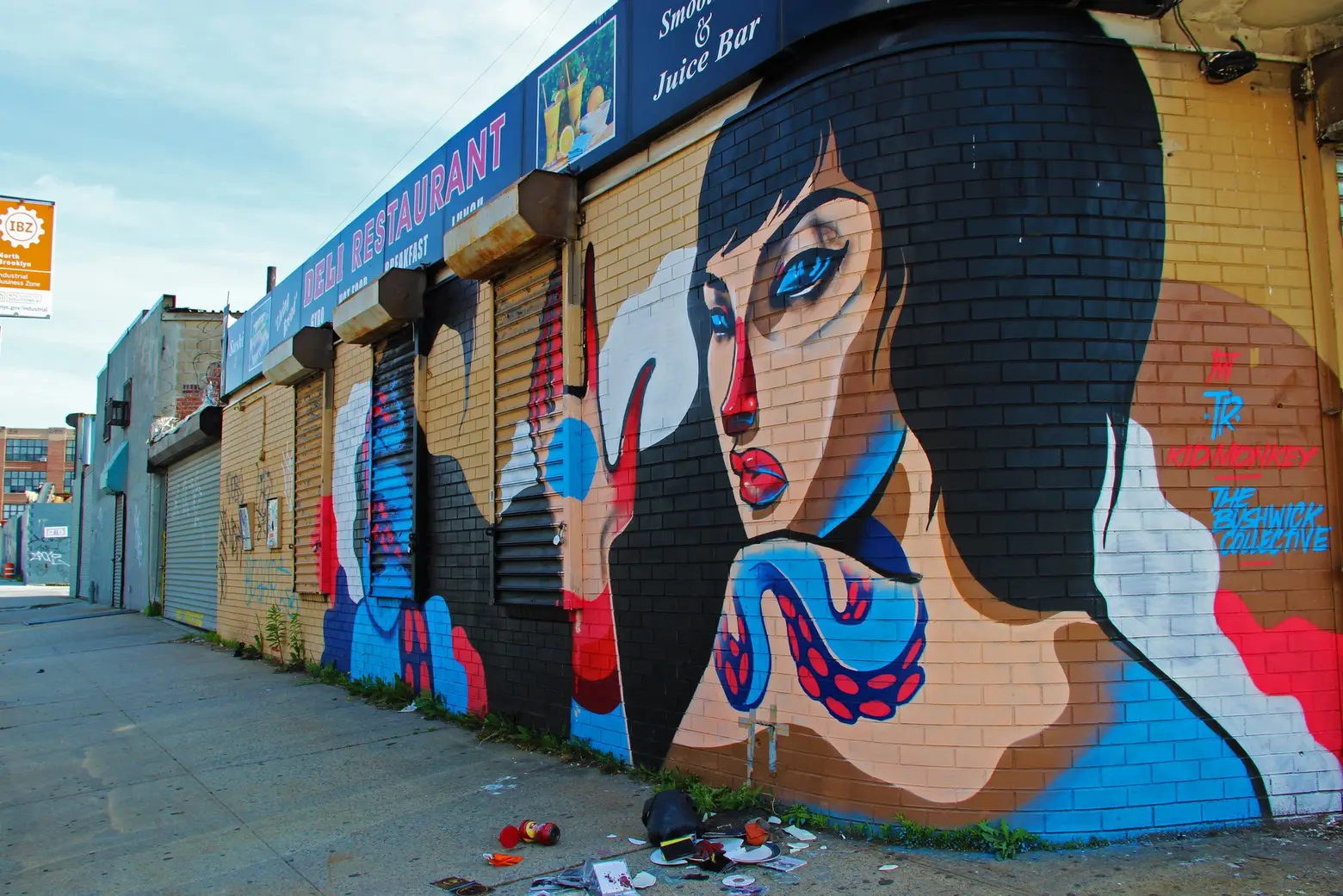
Kid Monkey for the Bushwick Collective
In response to artists being priced out of hipster-filled Williamsburg, Bushwick became a new hotspot for the creative crowd in the last decade. There is no shortage of galleries near the Bushwick/Ridgewood border, with colorful street art leading you in every direction. Whether you’re an art veteran or an up-and-comer, spaces like the Bushwick Collective, an outdoor gallery that showcases artists from all over the world, and NURTUREart serve as the perfect working space. After a day of checking out artwork, like at the Living Gallery, grab a drink at Flowers For All Occasions, an artist-run cafe and bar.
Washington Heights may be a long subway ride downtown, but it gives artists enough elbow room to spread out and work within their own space. The diverse community consists of young professionals, retired Manhattanites and working families. The neighborhood’s rich history shines through in its architecture; it has some of the greatest concentrations in NYC of pre-war buildings, many which have retained much of their original detail. To learn a little more about the history behind Washington Heights, tour the Morris-Jumel Mansion, the oldest house in Manhattan. For those looking for a more modern art scene, head over to the Northern Manhattan Arts Alliance (NoMAA), which offers both exhibitions and events like the Uptown Arts Stroll, a month-long arts festival every June.
This year, the New York Times Travel section listed the South Bronx as one of their Top 52 Places to Go in 2017. Despite controversies surrounding impending gentrification, Mott Haven’s cultural institutions make it appealing to artists everywhere. BronxArtSpace is a nonprofit gallery that promotes underrepresented and emerging artists while creating conversations about national and global issues. The Bronx Documentary Center shares photography, film and new media with the purpose of building community, exposing injustices and creating positive social change. And then there’s the Bronx Museum of the Arts, which specializes in contemporary art by New Yorkers of Latin, Asian, and African-American descent.
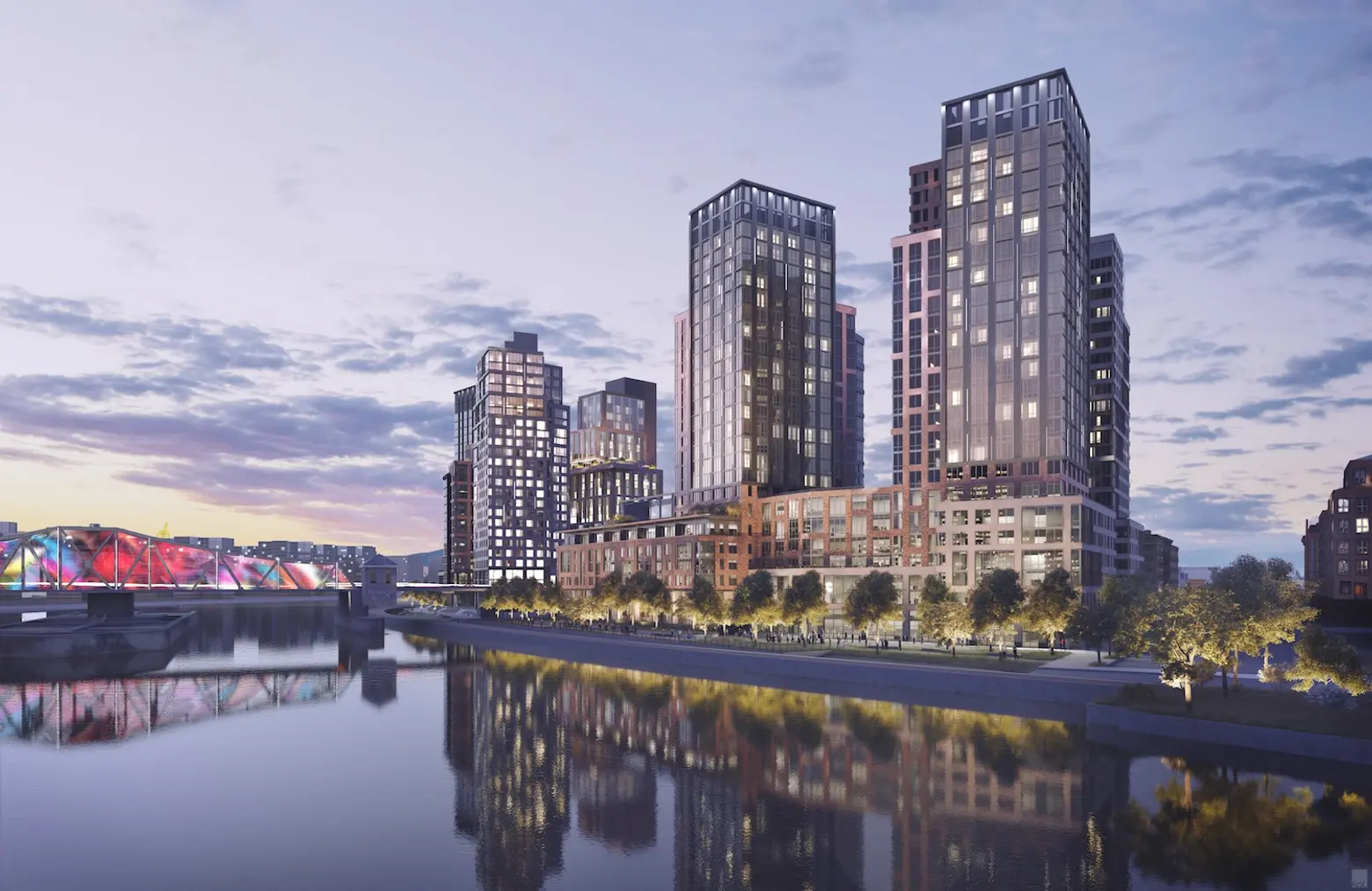 Rendering of the waterfront development via Hill West
Rendering of the waterfront development via Hill West
While new affordable housing units are being built throughout the South Bronx at a rapid rate, some hope to combine culture and community in mixed-use developments, both of which are draws for artists. The Bronx Commons project includes 305 all-affordable apartments, plus the Bronx Music Hall, a 300-seat venue that will serve as a cultural hub for residents. Another mixed-use complex known as the Peninsula, which will replace the Spofford Juvenile Detention Center, will usher in 740 affordable apartments, and Hunts Point Brewing Company, Il Forno Bakery and LightBox-NY film studio are said to be future tenants. Along the waterfront, a massive, seven-tower development will bring yet another 13,000 apartments to the ‘hood (though no word on if they’ll be affordable), as well as a 25,500-square-foot public waterfront esplanade.
8. East Harlem
Spanish Harlem, the famed Latin neighborhood stretching from East 96th to East 142nd Streets continues to steadily transform, with a great deal of development and affordable housing units being built. Thankfully, the cultural and artistic integrity of the community, with its rich mix of immigrant communities, remains intact. East Harlem sits close to Central Park, Manhattan waterfront and Randall’s Island, giving it both a healthy nightlife and family-friendly activities. For example, El Barrio’s Artspace PS109, a community-driven project that transformed an abandoned public school into an arts facility, has 89 units of affordable live and/or work housing for artists and their families. The Poet Den’s Theater and Gallery is a hidden gem in East Harlem for the community to both gather and participate in different creative expressions.
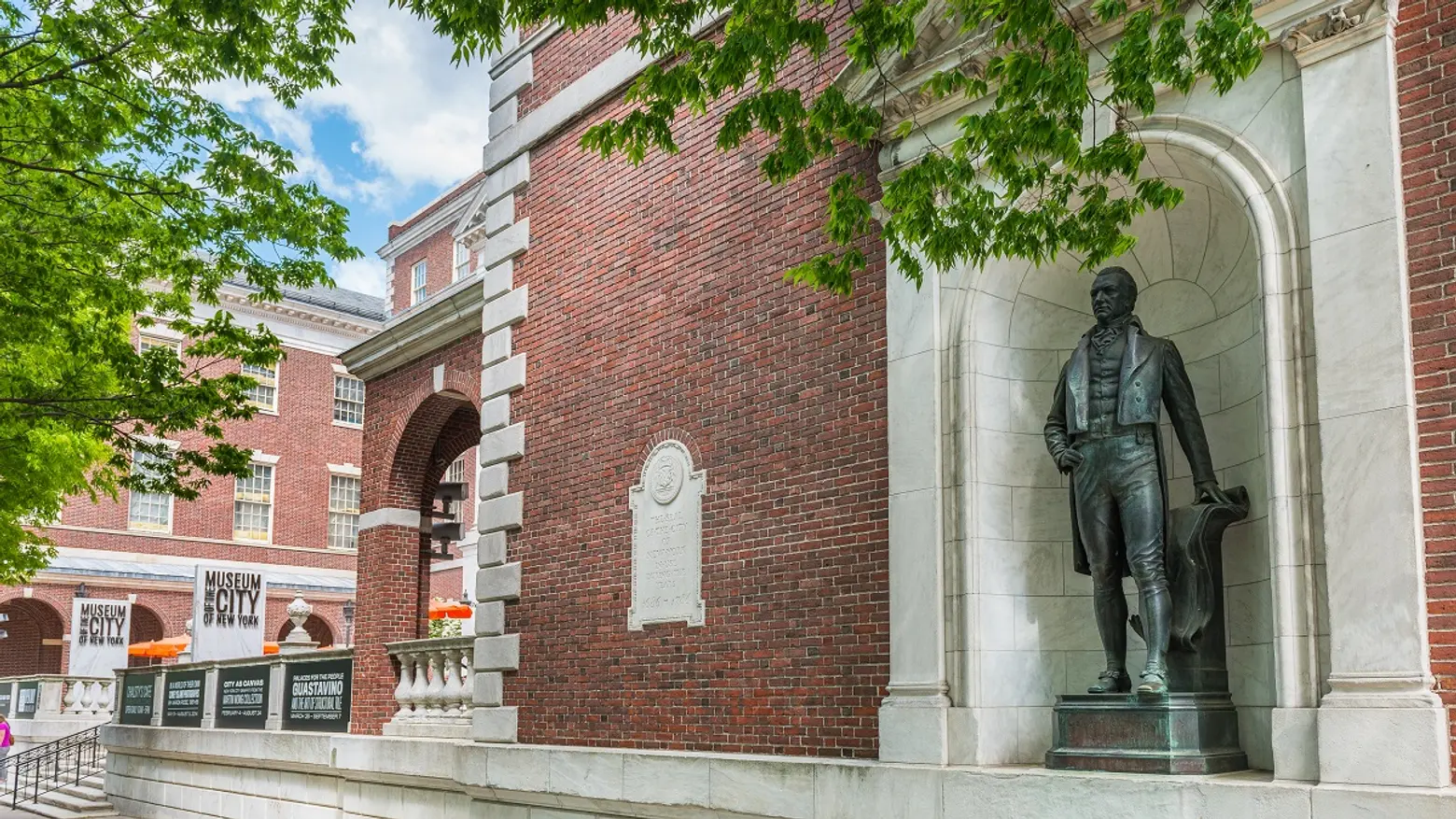 Museum of the City of New York
Museum of the City of New York
To get a better feel for its eclectic inhabitants, go to El Museo del Barrio, which pays tribute to Latin American and Caribbean art, focusing on bringing in works from Puerto Rico as well as the Puerto Rican community in NYC. Or, to learn more about the broader diversity of the entire city, East Harlem’s Museum of the City of New York is a must visit. Finally, the National Black Theatre is a neighborhood staple that’s among the oldest black theaters in the country, with a core mission of providing safe unhindered space for artists of color.
9. Jersey City
Often called the “sixth borough,” Jersey City has risen in the cultural ranks in the past few years, even snagging the “most livable” in the United States title last fall. Mana Contemporary, a 35-acre art studio and exhibition space that opened in 2011, gives visitors a behind-the-scenes look at the projects happening at the studio. There, artists specialize in many mediums like painting, sculpture, photography, dance and film, while also collaborating on other projects. If looking to enjoy live music, the newly restored White Eagle Hall venue features space for 800 people and is expected to fully open this April. Plus, there’s the proximity to Manhattan and beautiful views of the Statue of Liberty and Brooklyn.
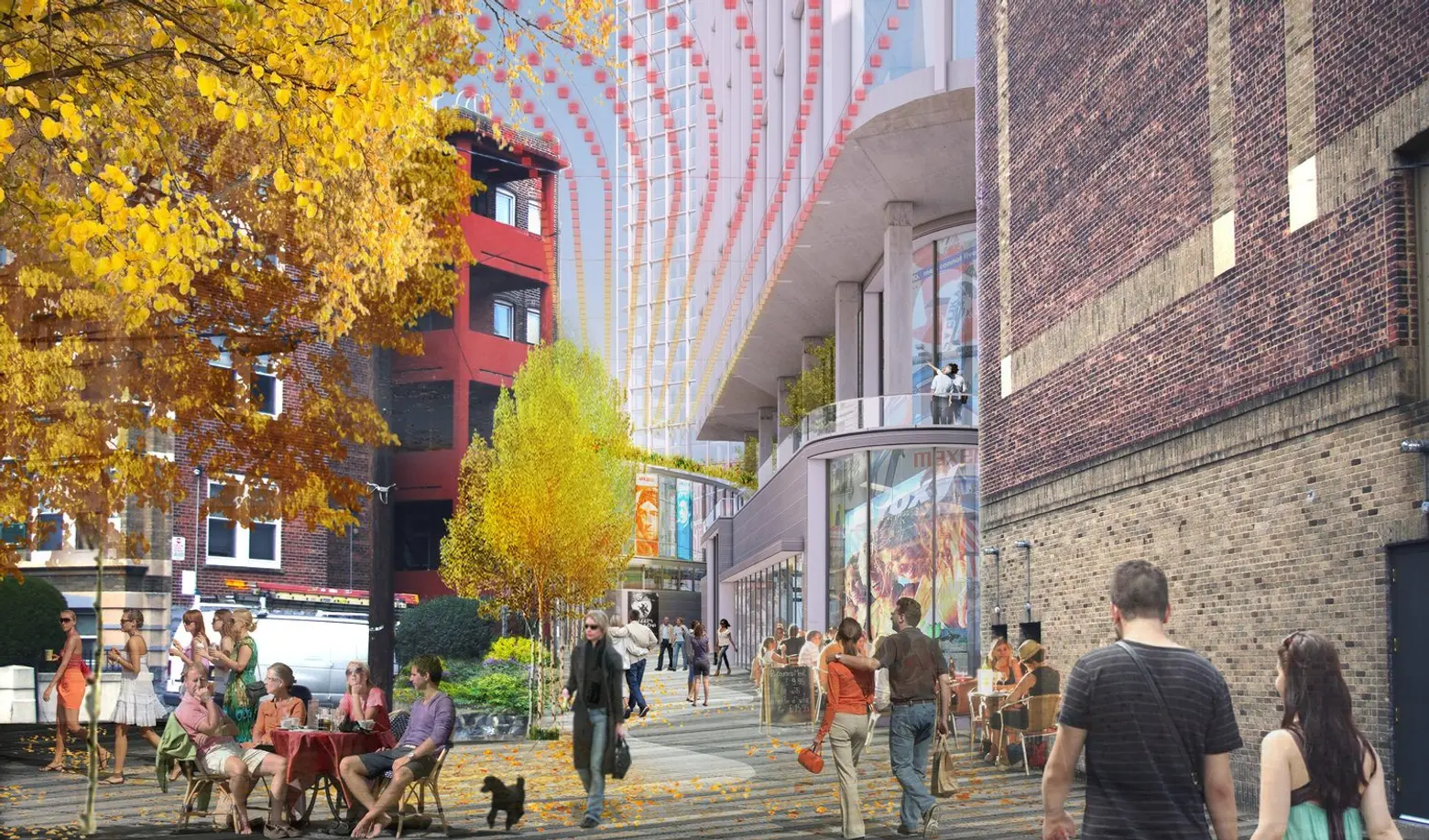 808 Pavonia Avenue by Studio V Architecture
808 Pavonia Avenue by Studio V Architecture
With major mixed-use projects going up in the neighborhood, Jersey City’s Journal Square is looking to becoming an official Art District. As 6sqft recently learned, the newest project will be a two-tower complex that will feature more than 1,000 units, a 6,000-square-foot retail space, and a 126-seat black box theater, home to Art House Production.
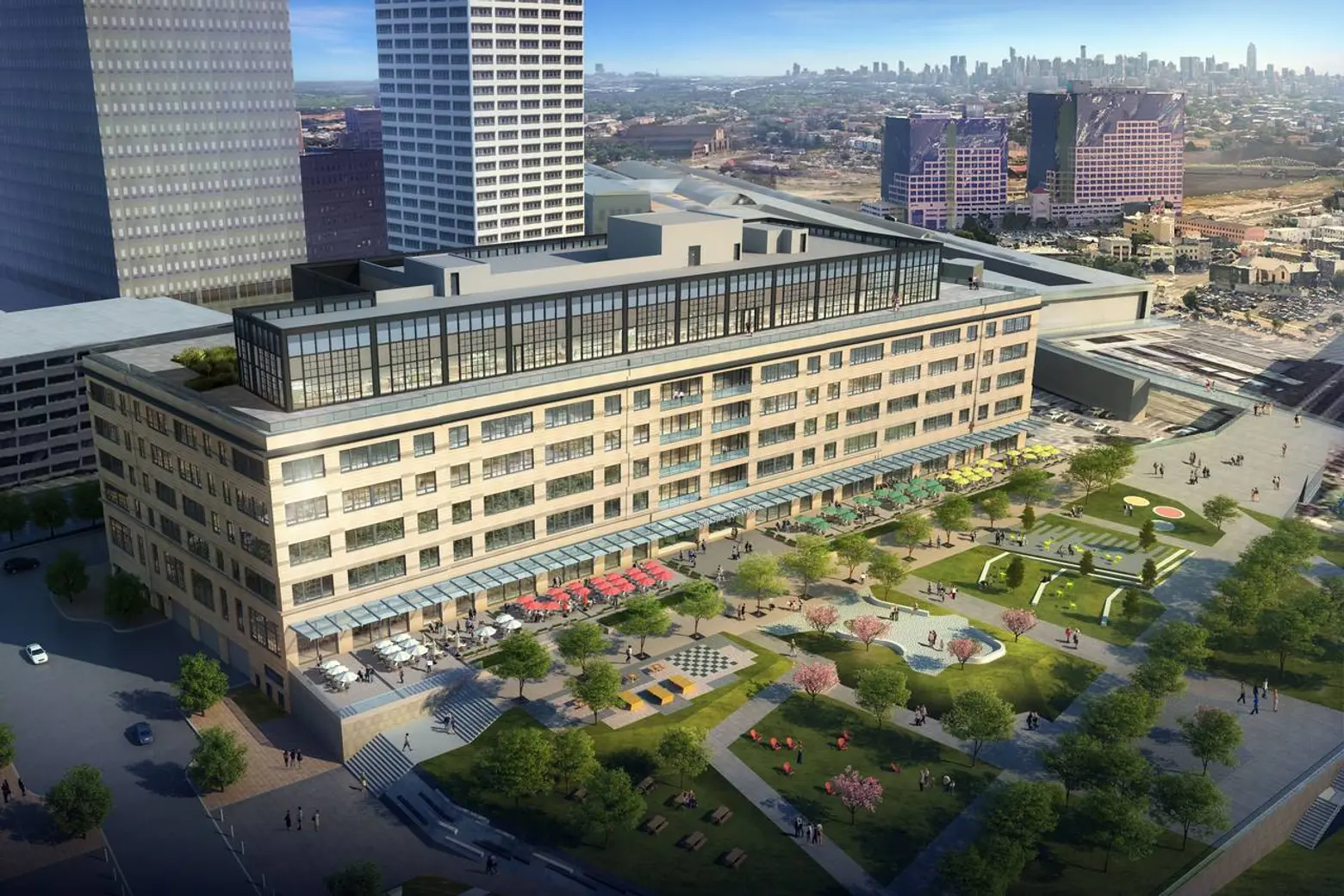
Mulberry Commons courtesy of Perkins Eastman Architects
10. Newark
Despite being New Jersey’s largest city, the revitalization efforts in Newark have been slow to take off, until recently. Now, with $2 billion in commercial and residential development underway, the long-ignored neighborhood is finally getting the transformation it deserves. This year, city officials announced their plan to build Mulberry Commons, a 22-acre development that includes residential and commercial space, as well as a three-acre park and a High Line-style pedestrian bridge. Near Mulberry Commons is Teachers Village, a mixed-use complex that includes three charter schools, ground-level retail and 204 residential units, with a preference given to educators. Storefronts include Closet Savvy Provident Bank and Bella Nail Lounge and Beauty Bar.
If you’re looking for that community-centric vibe, Military Park, which was newly renovated, offers everything from Tai Chi classes to weekly arts and culture programs. Plus, Newark is home to the largest indoor vertical farm, Aerofarms, which hopes to produce $2 million pounds of food per year, feeding the New York Metro Area with nutritious crops.
+++
RELATED:
